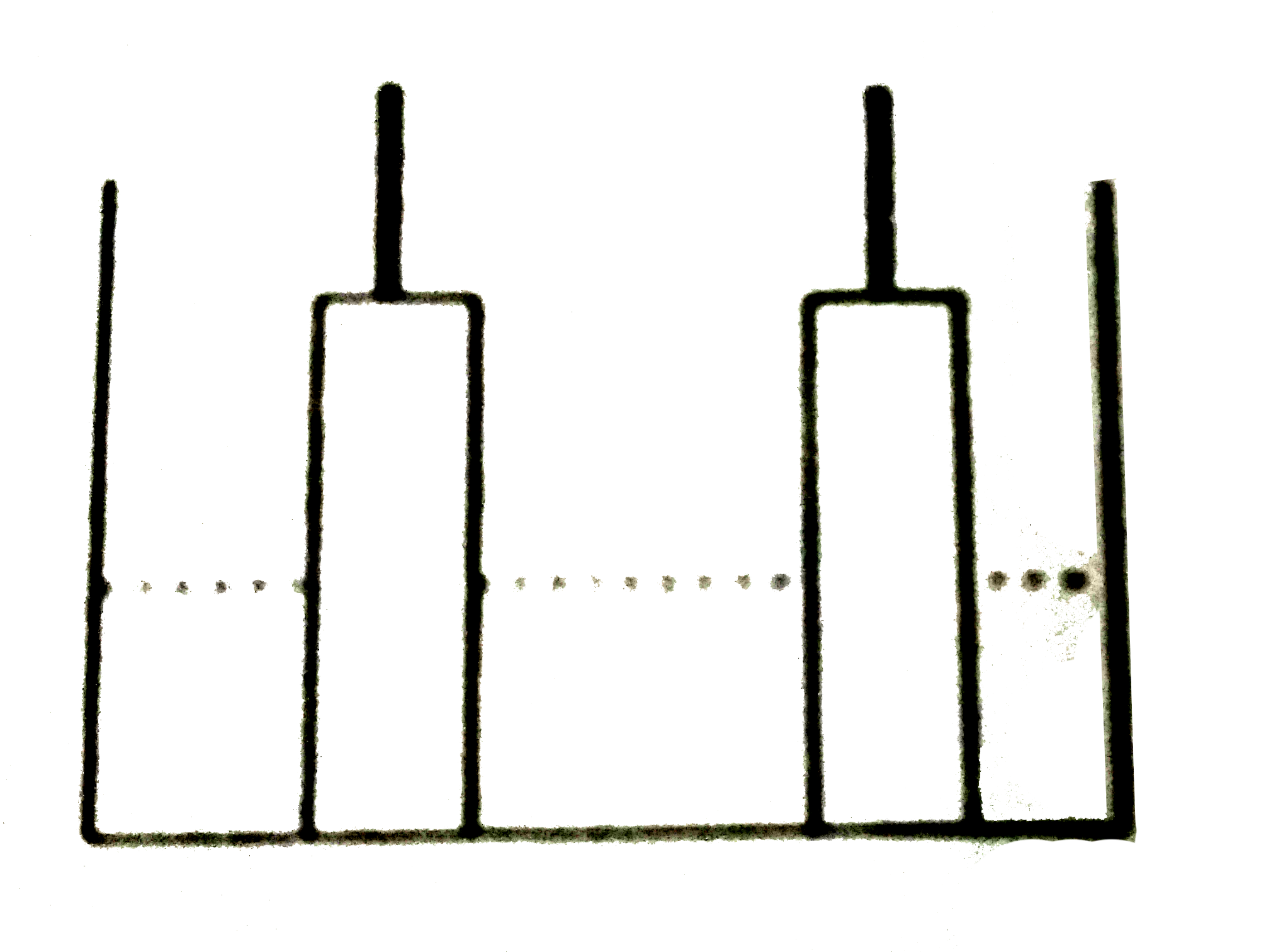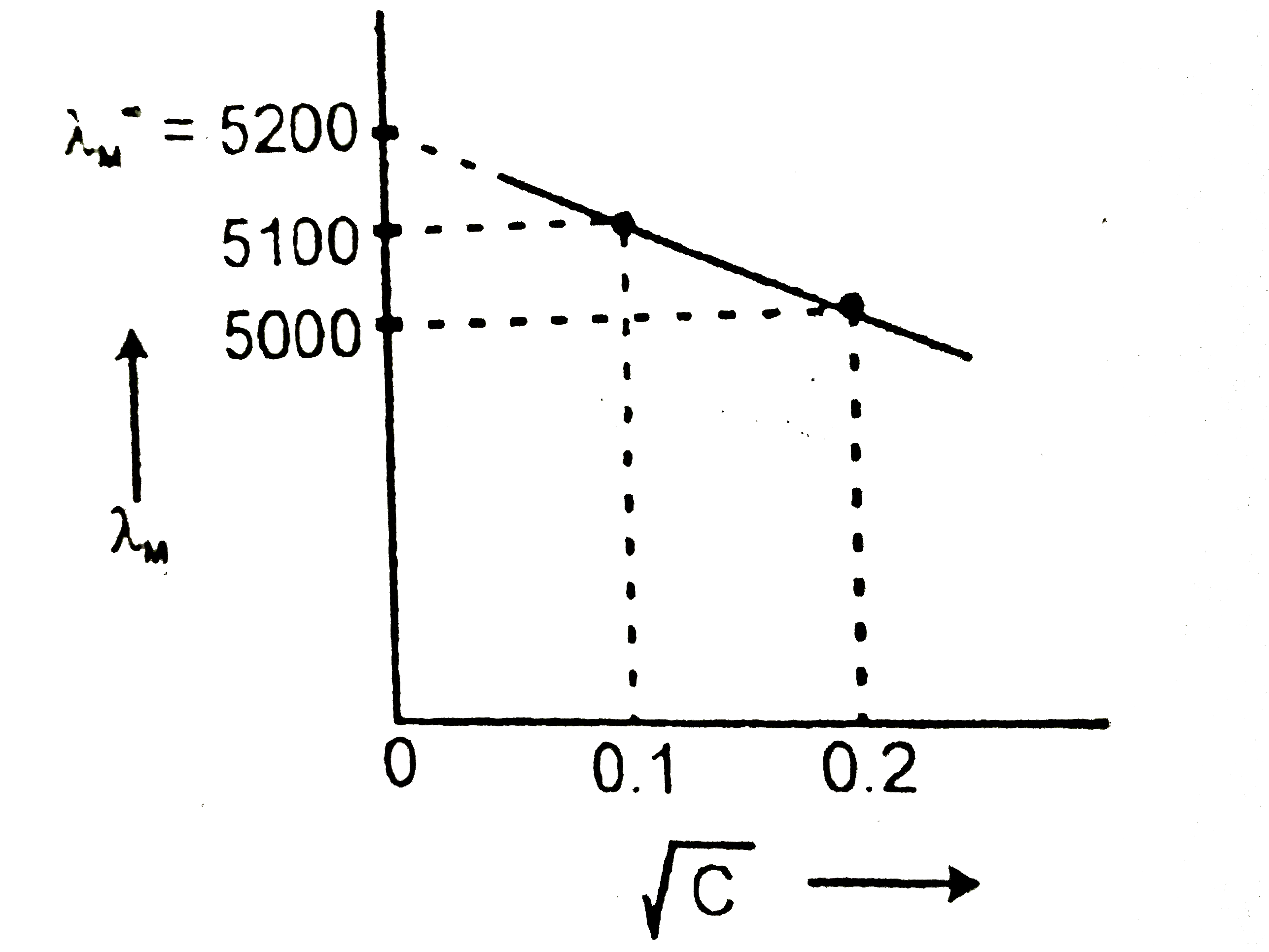Complete Solutions to Miscellaneous Solved Problems of chapter ELECTROCHEMISRY of Class 12 book with complete answers and questions
| Class 12 | CHEMISTRY |
| Chapter | ELECTROCHEMISRY |
| RESONANCE | Miscellaneous Solved Problems |
| Number Of Questions | 9 |
| Academic Year | 2023-24 |
Na-amalgam is prepared by electrolysis of `NaCl` solution using liquid Hg as cathode. How long should the current of 10 amp. Is passed to produce `10%` Na-Hg on a cathode of 10 gm Hg. (atomic mass of `Na=23`).
(A). 7.77 min
(B). 9.44 min.
(C). 5.24 min.
(D). 11.39 min01:37View SolutionWe have taken a saturated solution of `AgBr.K_(sp)` of `AgBr` is `12xx10^(-14)`. If `10^(-7)` mole of `AgNO_(3)` are added to 1 mitre of this solutio then the conductivity of this solution in terms of `10^(-7)Sm^(-1)` units will be [given `lamda((Ag^(+)))^(@)=4xx10^(-3)Sm^(2)mol^(-1)lamda_((Br^(-)))^(@)=6xx10^(-3)Sm^(2)mol^(-1). lamda_((NO_(3)^(-)))^(@)=5xx10^(-3)Smmol^(-1))`
(A). 39
(B). 55
(C). 15
(D). 4102:16View SolutionA hydrogen electrode X was placed in a buffer solution of sodium acetate ad acetic acid in the ratio `a:b` and another hydrogen electrode `Y` was placed in a buffer solution of sodium acetate ad acetic in the ratio `b:a` if reduction potential values for two cells are found to be `E_(1)` and `E_(2)` respectively w.r.t. standard hydrogen electrode, the `pK_(a)` value of the acid can be given as
(A) `(E_(1)-E_(2))/(0.118)`
(B). `-(E_(1)+E_(2))/(0.118)`
(C). `(E_(1))/(E_(2))xx0.118`
(D). `(E_(2)-E_(1))/(0.118)`03:05View SolutionAt what `([Br^(-)])/(sqrt([CO_(3)^(2-)])` does the following cell have its reaction at equilibrium?
`Ag(s)|Ag_(2)CO_(3)(S)|Na_(2)CO_(3)(aq)||KBr(aq)|AgBr(s)|Ag(S)`
`K_(SP)=8xx10^(-12)` for `Ag_(2)CO_(3)` and `K_(SP)=4xx10^(-13)` for AgBr.
(A). `sqrt(1)xx10^(-7)`
(B). `sqrt(2)xx10^(-7)`
(C). `sqrt(3)xx10^(-7)`
(D). `sqrt(4)xx10^(-7)`03:00View Solution
A resistane of `50Omega` is registered when two electrodes are suspended into beaker containing a dilute solution of a strong electrolyte such that exactly half of the them are submerged into solution. If the solution is diluted by addig pure water (negligible conductivity) so as to just completely submerge the electrodes. the new resistance offered by te solutio would be .
(A). `50Omega`
(B). `100Omega`
(C). `25Omega`
(D). `200Omega`01:51View SolutionCalculate the cell EMF in mV for
`Pt|H_(2)(1atm)|HCl(0.01M)||AgCl(s)|Ag(s)` at 298 K
if `triangleG_(1)^(@)` values are at `25^(@)C`
`-109.56(kJ)/(mol)` for `AgCl(s)` and
`-130.79(kJ)/(mol)` for `(H^(+)+Cl^(-))(ag)`
(A). 456 mV
(B). 654 mV
(C). 546 mV
(D). None of these05:21View SolutionConsider the cell `Ag(s)|AgBr(s)|Br^(-)(aq)||AgCl(s)|Cl^(-)(aq)|Ag(s)` at `25^(@)C`. The solubility product constants of `AgBr` & `AgCl` are respectively `5xx10^(-13)&1xx10^(-10)` for what ratio of the concentrations of `Br^(-)` & `Cl^(-)` ionns would the emf of the cell be zero?
(A). `1:200`
(B). `1:100`
(C). `1:500`
(D). `200:1`02:02View SolutionThe coductivity of a solution may be take to the directly proportional to the total concentration of the charge carriers (ions) present in it in many cases. Using the above fid the percent decrease in conductivity (k) of a solution of a weak monoacidic base BOH when its 0.1 M solution is diluted to double its original volume `(K_(b)=10^(-5)` for BOH) (take `sqrt(50)=7.07`) (mark the answer to nearest integer)
02:17View Solution
At 0.04 M concentration the molar conductivity of a solution of a electrolyte is `5000Omega^(-1)cm^(2)mol^(-1)` while at 0.01 M concentration the value is `5100Omega^(-1)cm^(2)mol^(-1)` making necessary assumption (taking it as strong electrolyte) find the molar conductivity at infinite dilution and also determine the degree of dissociation of strong electrolyte at 0.04M.01:36View Solution
Miscellaneous Solved Problems questions and complete solutions for chapter ELECTROCHEMISRY of PHYSICAL, INORGANIC, AND ORGANIC CHEMISTRY of Class 12
